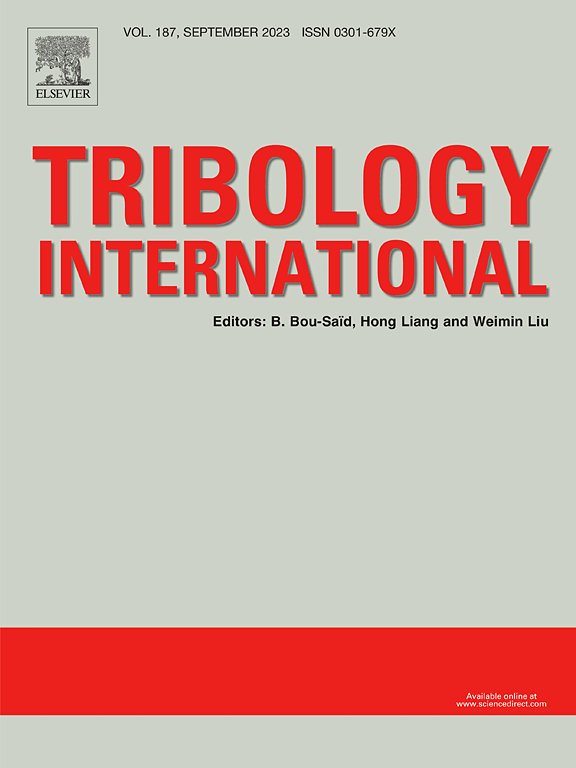Application of quantitative structure tribo-ability relationship model in polyimide-induced alignment superlubricity system
IF 6.1
1区 工程技术
Q1 ENGINEERING, MECHANICAL
引用次数: 0
Abstract
To investigate how the molecular structure of lubricants influences polyimide-induced alignment superlubricity system, we developed quantitative structure tribo-ability relationship (QSTR) models. These models aim to uncover the relationship between lubricant molecular structures and the phenomena of induced alignment superlubricity. Thirty-eight organic compounds and two ionic liquids underwent testing, with friction experiments carried out using GCr15 steel paired with polyimide. We crafted three distinct models based on two-dimensional (2D) descriptors, three-dimensional (3D) descriptors, and a combination of both. The results indicate that all three models exhibit impressive accuracy, robustness, and predictive ability. By analyzing the impact of different descriptors on lubrication systems, we offer several suggestions regarding molecular structural characteristics that enhance alignment superlubricity.
定量结构摩擦能力关系模型在聚酰亚胺诱导取向超润滑系统中的应用
为了研究润滑油分子结构对聚酰亚胺诱导取向超润滑体系的影响,建立了定量结构摩擦能力关系(QSTR)模型。这些模型旨在揭示润滑油分子结构与诱导取向超润滑现象之间的关系。测试了38种有机化合物和两种离子液体,并使用GCr15钢与聚酰亚胺配对进行了摩擦实验。我们基于二维(2D)描述符、三维(3D)描述符以及两者的组合,构建了三个不同的模型。结果表明,这三种模型都表现出令人印象深刻的准确性、稳健性和预测能力。通过分析不同描述符对润滑系统的影响,我们提出了一些关于分子结构特征的建议,以增强取向超润滑。
本文章由计算机程序翻译,如有差异,请以英文原文为准。
求助全文
约1分钟内获得全文
求助全文
来源期刊

Tribology International
工程技术-工程:机械
CiteScore
10.10
自引率
16.10%
发文量
627
审稿时长
35 days
期刊介绍:
Tribology is the science of rubbing surfaces and contributes to every facet of our everyday life, from live cell friction to engine lubrication and seismology. As such tribology is truly multidisciplinary and this extraordinary breadth of scientific interest is reflected in the scope of Tribology International.
Tribology International seeks to publish original research papers of the highest scientific quality to provide an archival resource for scientists from all backgrounds. Written contributions are invited reporting experimental and modelling studies both in established areas of tribology and emerging fields. Scientific topics include the physics or chemistry of tribo-surfaces, bio-tribology, surface engineering and materials, contact mechanics, nano-tribology, lubricants and hydrodynamic lubrication.
 求助内容:
求助内容: 应助结果提醒方式:
应助结果提醒方式:


